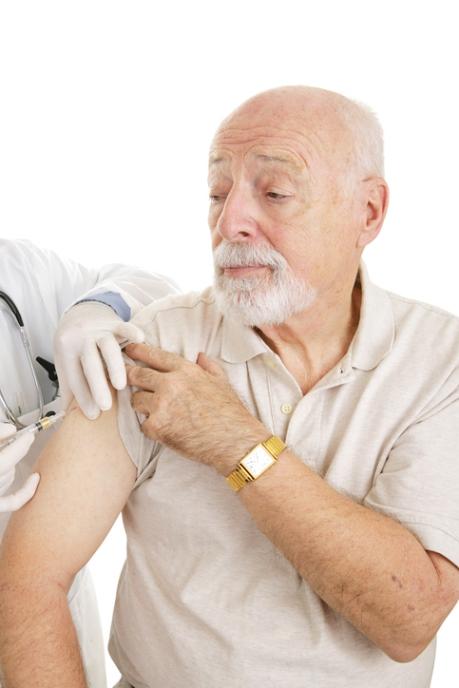
A new study out of Japan suggests that seasonal flu vaccination is associated with less unnecessary antibiotic use in people over 65, researchers reported late last week in the Journal of Antimicrobial Chemotherapy.
Using data from the Vaccine Effectiveness, Networking, and Universal Safety study database, which includes all claims data and vaccination records from the 2015-16 through 2020-21 flu seasons, researchers with Japan's National Center for Global health and Medicine examined the association of vaccination status with the frequency of antibiotic prescription, frequency of healthcare facility consultation, risk of admission to a hospital, and risk of death in the follow-up period for the same season (January 1 to March 31). They focused on patients ages 65 and older who visited any healthcare facility with an upper respiratory infection (URI), comparing vaccinated to unvaccinated patients.
50% lower rate of hospital admission
A total of 244, 642 people were enrolled in the study. Modified Poisson regression analyses showed that seasonal influenza vaccination was associated with a lower risk ratio (RR) for the frequency of antibiotic prescription (RR, 0.98; 95% confidence interval [CI] 0.96 to 1.0), higher RR for the frequency of healthcare facility visits (RR 1.12; 95% CI 1.11 to 1.12), lower rate of admission (RR 0.51; 95% CI 0.48 to 0.54), and lower risk for death (RR 0.39; 95% CI 0.30 to 0.51).
Analysis of 101, 734 people with matched propensity score data in each of the unvaccinated and vaccinated groups showed that the average treatment effect of vaccination was −0.004 (95% CI −0.006 to −0.002) for the frequency of antibiotic prescription, −0.005 (−0.007 to −0.004) for the frequency of healthcare facility consultation, −0.001 (−0.002 to −0.001) for the risk of admission and 0.00 (0.00 to 0.00) for the risk of death.
"Our results suggest that the seasonal influenza vaccine might help to reduce inappropriate AMU [antimicrobial use] for URIs, although care should be taken when interpreting the results," the study authors wrote. "This indirect benefit would be another reason to recommend seasonal influenza vaccination to the general population to enhance AMR [antimicrobial resistance] countermeasures in society."















